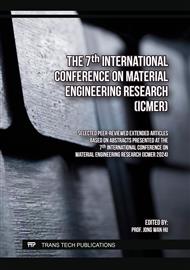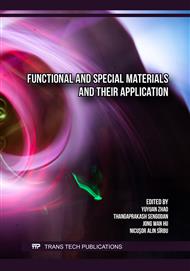p.49
p.59
p.67
p.77
p.85
p.93
p.103
p.109
p.115
Computational Study of the Influence of Crack Orientation in SCM440 Cracked Shaft on Strain Alteration under Transverse Excitation
Abstract:
Previous studies have demonstrated that crack geometry influences strain generation in cracked shafts under excitation loading. The behavior of strain generation varies notably under transverse loading suggesting that the crack orientation could have a significant effect on strain behavior under excitation. This computational study aims to investigate the influence of different crack orientations on strain behavior. The analysis examines the strain at crack tips and the effects of loading on crack alignment under transverse excitation. Crack-controlled parameters, such as shape factor, characteristic length, and orientation parameter, are found to be significant factors governing strain behavior. Specifically, cracks with greater circularity and larger characteristic lengths exhibit higher strain levels under excitation. Crack orientation becomes particularly significant in conveying the strain from the affected area of excitation loading through the crack front, especially in the case of a straight crack, resulting in high strain levels at both tips and distinct strain generation behavior. The findings highlight the significant impact of excitation-affected areas near the excitation location on strain generation over crack geometry. This underscores the potential risk of existing cracks in the shaft and the importance of these factors on strain generation behavior. This study enhances understanding of how crack orientation impacts strain behavior, offering valuable insights for structural integrity assessment and design optimization in engineering applications.
Info:
Periodical:
Pages:
93-99
Citation:
Online since:
December 2024
Authors:
Keywords:
Price:
Сopyright:
© 2024 Trans Tech Publications Ltd. All Rights Reserved
Share:
Citation:



